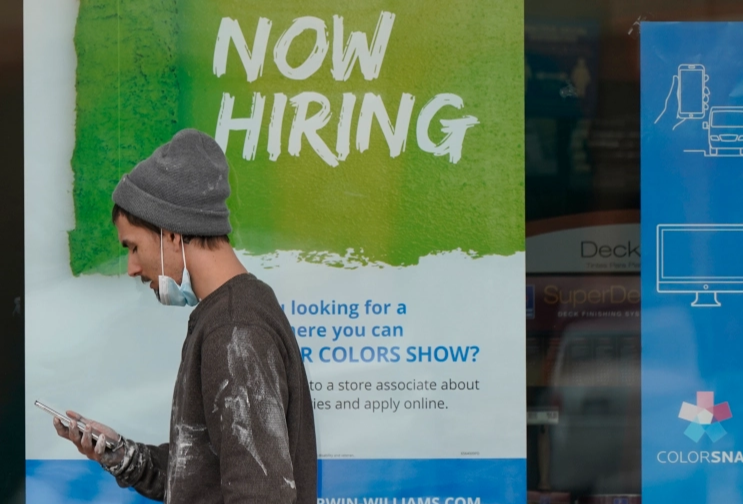
Weekly jobless claims, a proxy for layoffs, rose by a stronger-than-expected 11,000 last week to 362,000, the United States Department of Labor said on Thursday [File: Tony Dejak/AP
New York, October 1 (RHC)-- The economic recovery in the United States is still on track, but the labour market is signalling that growth is decelerating in the face of challenges ranging from the spread of the Delta variant of COVID-19 to stingier jobless benefits.
Weekly jobless claims, a proxy for layoffs, rose by a stronger-than-expected 11,000 last week to 362,000, the US Department of Labor said on Thursday. That is the third week in a row that initial claims have increased, and the highest reading since early August.
The biggest jump by state came from California, where nearly 18,000 more people filed for initial unemployment benefits last week than the week before. Goldman Sachs economists believe the expiration of federal unemployment benefits earlier this month may have been a factor boosting the number of Californians filing for state jobless benefits.
“The increase in initial jobless claims was again driven by a rise in California likely related to transitions from expired federal unemployment insurance benefits to other benefit programs,” said Goldman in a note to clients.
The number of Americans currently collecting jobless benefits – a metric known as continuing claims – fell by 18,000 in the week ending September 18. Labor market health is a key barometer for the world’s largest economy.
The nation’s jobs market has clawed back substantial losses from last year’s lockdowns, but it’s still 5.3 million jobs shy of recapturing its pre-pandemic level – and that shortfall does not take into account how much the labour force or the economy have grown since then.
And though the economy has steadily added jobs every month this year, it created a disappointing 235,000 jobs in August as hiring slowed in customer-facing sectors amid climbing infections rates from the highly contagious Delta variant of the coronavirus.
On Friday, the U.S. Department of Labor will release its closely watched monthly jobs report for September. Federal Reserve chief Jerome Powell has said he and his fellow policymakers are committed to maintaining their cheap money policies if that is what it takes to get Americans back to work.
But there is a disconnect in the U.S. labor market right now between the number of unemployed Americans and the record number of job openings that have left employers scrambling to fill positions. In July, some 10.9 million jobs in the US were going begging. And jobs are only created when employers actually add a worker to their payrolls.
This week, Powell told lawmakers on Capitol Hill that “factors related to the pandemic, such as caregiving needs and ongoing fears of the virus, appear to be weighing on employment growth.”
Complicating the picture is inflation. The Fed has a dual mandate to bring the economy to maximum employment while keeping inflation in its long-term target range of 2 percent.
Inflation has been trending well above that target this year as businesses cast off virus restrictions, triggering bottlenecks for raw materials and labour, and raising shipping costs.
But Powell has repeatedly said that he and his fellow policymakers see inflation as a temporary byproduct of the economic reopening and that eventually prices will moderate.
In a separate report on Thursday, the US Department of Commerce said the US economy grew 6.7 percent in the second quarter from the same period a year earlier. The revised figure was slightly adjusted upward from the previous estimate. But many economists are expecting a slowdown in growth in the third quarter of this year, largely relating to the spread of the Delta variant.

